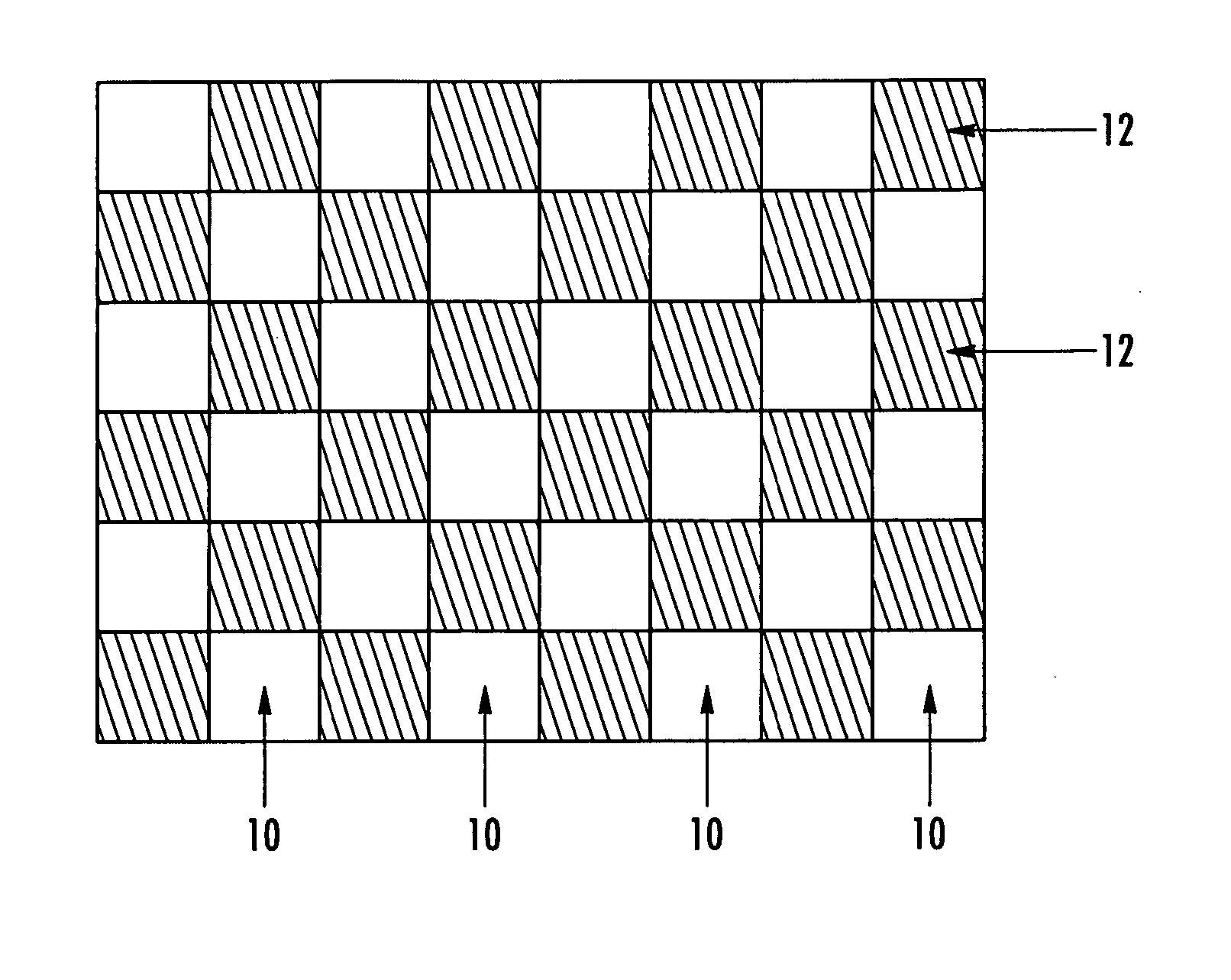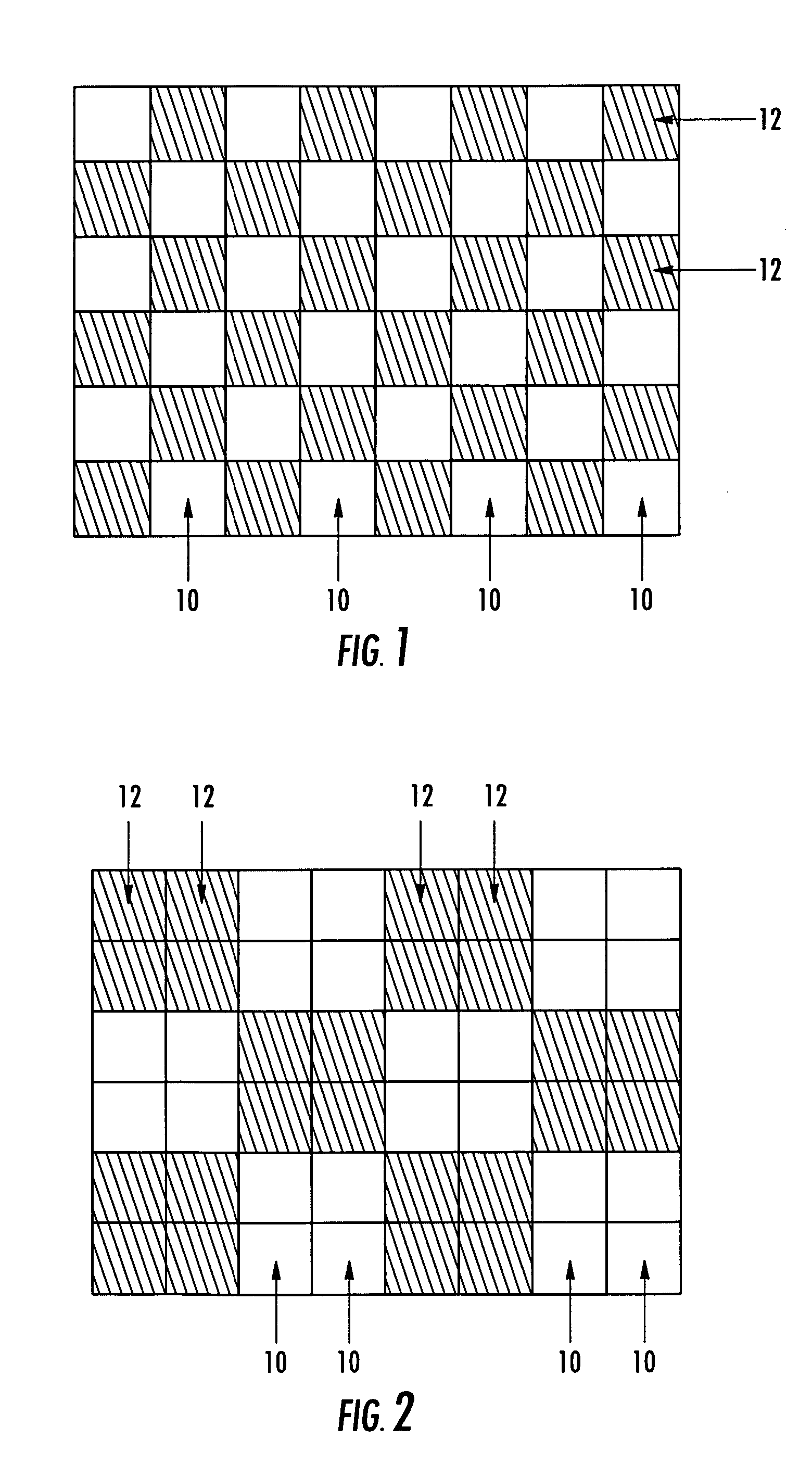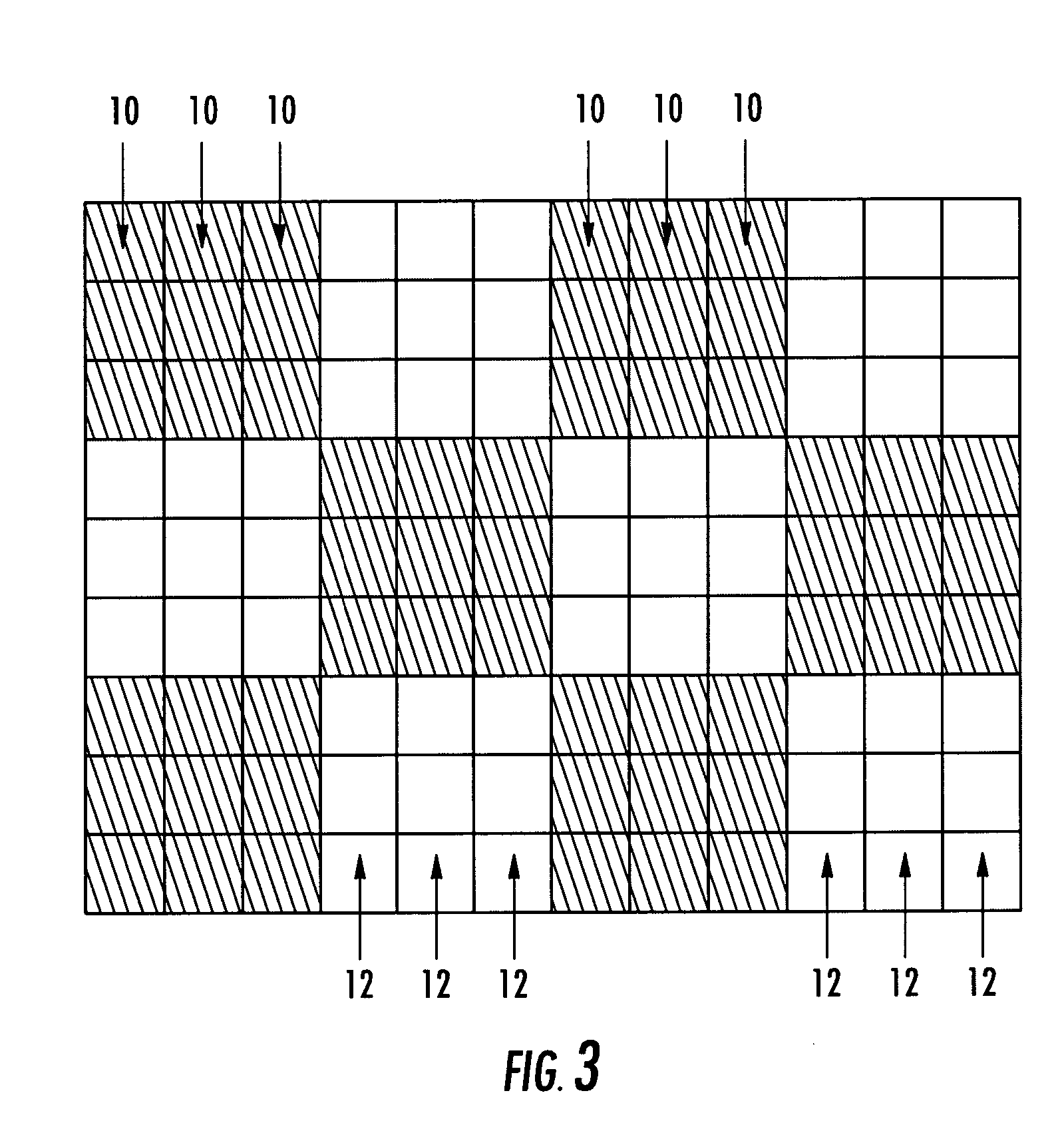Bio-optical sensors
a biooptical sensor and optical sensor technology, applied in the field of biooptical sensors, can solve the problems of inaccurate calibration signal, change in device conditions, time difference between the acquisition of dark reference frame, etc., and achieve the effect of increasing system sensitivity, accurate calibration signal, and less analy
- Summary
- Abstract
- Description
- Claims
- Application Information
AI Technical Summary
Benefits of technology
Problems solved by technology
Method used
Image
Examples
Embodiment Construction
[0015]FIG. 1 shows a straightforward form of the invention in which the image surface is divided into sensing pixels 10 and calibration pixels 12 which are interleaved on a 1:1 basis, i.e., in a checker board fashion. Each of the pixels 10, 12 is an imaging pixel of a well-known type, such as a 3-transistor or 4-transistor pixel based on CMOS technology. The calibration pixels 12 are shielded from light by a suitable mask, which may be printed on top of the array or may be formed by selective metallization during fabrication, for example. When a metal mask is used, there is preferably a layer separated from the readout electronics to reduce parasitic capacitance.
[0016] Alternatives to metallization for forming the opaque layer include silicided gate oxide, and superposition of color filters, i.e., overlaying red green and blue filters to give black.
[0017] It is preferable that the border pixels situated at the edge of the sensor are not used, either for sensing or calibration. The...
PUM
 Login to View More
Login to View More Abstract
Description
Claims
Application Information
 Login to View More
Login to View More - R&D
- Intellectual Property
- Life Sciences
- Materials
- Tech Scout
- Unparalleled Data Quality
- Higher Quality Content
- 60% Fewer Hallucinations
Browse by: Latest US Patents, China's latest patents, Technical Efficacy Thesaurus, Application Domain, Technology Topic, Popular Technical Reports.
© 2025 PatSnap. All rights reserved.Legal|Privacy policy|Modern Slavery Act Transparency Statement|Sitemap|About US| Contact US: help@patsnap.com



